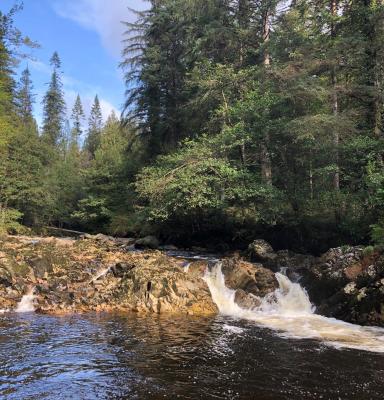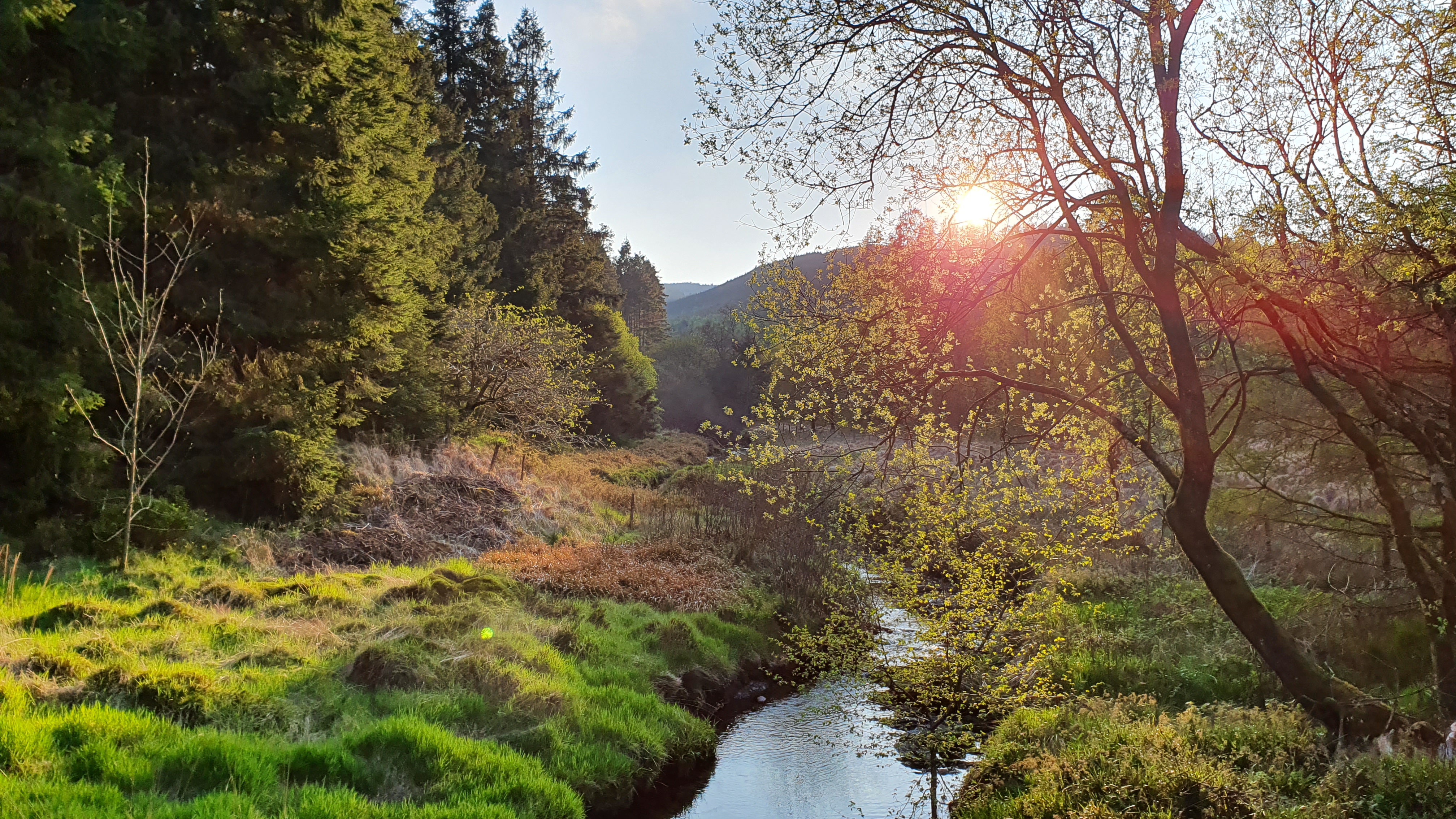
Implementation of Management Activities
Principle 10 addresses a range of practical issues, all of which must be dealt with appropriately and well both to ensure the achievement of management objectives and to avoid negative social, environmental and economic impacts.
This Principle requires owners and managers to choose and implement their management activities so that they are consistent with their economic, environmental and social policies and objectives and in compliance with the Principles and Criteria collectively.

-
Criterion 10.1
After harvesting or in accordance with plans, regenerating vegetation cover in a timely fashion to pre-harvesting or more nature conditions through natural or artificial regeneration methods.
-
Criterion 10.2
Using species for regeneration that are ecologically well adapted to the site and to the management objectives, and using native species and local genotypes for regeneration unless there is clear and convincing justification for using others.
-
Criterion 10.3
Only using alien species when knowledge and/or experience have shown that any invasive impacts can be controlled and effective mitigation measures are in place.
-
Criterion 10.4
Not using genetically modified organisms.
-
Criterion 10.5
Using silvicultural practices that are ecologically appropriate for the vegetation, species, sites and management objectives.
-
Criterion 10.6
Minimising or avoiding the use of fertilizers; when fertilizers are used, demonstrating that their use is equally or more ecologically and economically beneficial than alternative practices, and preventing, mitigating, and/or repairing damage to environmental values.
-
Criterion 10.7
Using integrated pest management and silvicultural systems which avoid, or aim at eliminating, the use of chemical pesticides, and not using any chemical pesticides prohibited by FSC policy; when pesticides are used, preventing, mitigating, and/or repairing damage to environmental values and human health.
-
Criterion 10.8
Minimising, monitoring and strictly controlling the use of biological control agents in accordance with internationally accepted scientific protocols; when biological control agents are used, preventing, mitigating, and/or repairing damage to environmental values.
-
Criterion 10.9
Assessing risks and implementing activities that reduce potential negative impacts from natural hazards.
-
Criterion 10.10
Managing infrastructural development, transport activities and silviculture so that water resources and soils are protected and disturbance of and damage to rare and threatened species, habitats, ecosystems and landscape values are prevented, mitigated and/or repaired.
-
Criterion 10.11
Managing activities associated with harvesting and extraction of timber and non-timber forest products so that environmental values are conserved, merchantable waste is reduced, and damage to other products and services is avoided.
-
Criterion 10.12
Disposing of waste materials in an environmentally appropriate manner.
(For the full text of each Criterion, see the Principles and Criteria.)
For FSC Forest Management certificate holders, compliance with these requirements is assessed by independent certification bodies using the set of indicators adapted to national, regional or local conditions in the applicable approved forest stewardship standard.
What does this mean in the UK?
Indicators adapted to the UK context are contained in our national forest stewardship standard, familiar to most forest managers as the UK Woodland Assurance Standard, or UKWAS.
There is a lot going on under Principle 10, and this would be a very long article if we discussed all of its implication for forest management in the UK. Instead, we will focus on a few key issues:
- the combination of species choice and silvicultural decisions encompassed by Criteria 10.1 to 10.5
- integrated pest management and pesticide use.
Species choice and silvicultural decisions
Background: forest cover in the UK
- By the beginning of the 20th century, our forest cover had dwindled to around 5% of our land area. Much of this area had been continuously wooded for a very long time, and was in various types and intensities of traditional management, but there were also plantations established by private landowners.
- The last 100 years have seen a huge increase in woodland area, which now stands at over 13 % for the UK as a whole. The vast majority of that woodland expansion was by planting, mostly with non-native conifer species.
- Prior to the introduction of The Policy for Broadleaved Woodlands by the Forestry Commission in 1985, native broadleaves had been replaced with faster growing non-native conifers on some sites, leaving us with a legacy of plantations on ancient woodland sites (PAWS).
- Today, 51 % of UK woodland area is made up of conifers (some of which is native Scots pine). One introduced species, Sitka spruce, now makes up more than a quarter of all UK woodland, more than any other single species (for more information, see the latest edition of Forestry Statistics from Forest Research).
- The huge expansion of UK woodland area by planting in the last century has effected the current balance of species and the structure of most of our forests. The planting of large areas in short periods of time, especially in the uplands, resulted in uniform blocks of the same age. While a range of scales and intensities of harvesting and regeneration have been practised in the lowlands, in the uplands a combination of windier conditions and poorer soils and the associated risk of wind damage to trees have been seen as limiting the scope to diversify the structure of even-aged areas. Large even-aged stands of trees, high wind risk and mechanisation of harvesting have perpetuated a system of clearfelling in many upland forests. Here structural diversity is often achieved at the forest level, with shifting patches of open ground and stands of a range of ages, rather than within individual stands.
Criteria 10.1 to 10.5 in the UK context
All of the above, and more, helps to put Criteria 10.1 to 10.5 into context in the UK. What we say about species choice has to take account of the realities of the current composition of our forests. We also have to think about the resilience of our forests to climate change, pests and diseases. Unfortunately, opinion is divided as to whether we should address resilience by emphasising the ecological adaptation of native species or the diversification of non-native species.
Indicator 10.2.1 The range of species selected for new woodlands, and natural or artificial regeneration of existing woodlands shall be suited to the site and shall take into consideration:
-
Improvement of long-term forest resilience
-
Management objectives
-
Requirements for conservation and enhancement of biodiversity (see [Principles 6 and 9])
-
Requirements for enhancement and restoration of habitats (see [Principles 6 and 9])
-
Landscape character. [UKWAS 2.8.1(a)]
Maximum and minimum percentage requirements for different groups of species were removed from the current version of our national standard, UKWAS 4, on the basis that this ‘forestry by numbers’ approach often resulted in perverse outcomes in practice. The standard instead emphasises the need to select a range of species, and to take account of resilience and biodiversity; whatever the exact approach taken by the owner/manager, this should result in diversification of species.
One topic which has arisen during the development of UKWAS 5 is that of natural regeneration of non-native conifers. While owners/managers might welcome this in parts of the forest, it might be unwelcome on open habitats or in semi-natural woodland, whether inside or adjacent to the forest area. This is one of the factors to take into account in the ‘enhancement and restoration of habitats’.
Just as UKWAS 4 is not prescriptive about species composition, it is also not prescriptive about silvicultural approaches. (There is a specific percentage requirement for long-term retentions and/or areas managed under lower impact silvicultural systems in FSC indicator 6.6.2/UKWAS 4.6.2, but this as a measure to benefit biodiversity rather than as a more general management approach.) Instead, there is a recognition of the wide range of factors which must be considered when making management decisions, and a general steer towards lower-impact approaches:
-
Indicator 10.5.1 Appropriate silvicultural systems shall be adopted which are suited to species, sites, wind risk, tree health risks and management objectives and which stipulate soundly-based planting, establishment, thinning, felling and regeneration plans. [UKWAS 2.10.1(a)]
-
Indicator 10.5.2 Where species, sites, wind risk, tree health risk and management objectives allow, a range of silvicultural approaches, and in particular lower impact silvicultural systems, shall be adopted with the aim of diversifying ages, species and stand structures. [UKWAS 2.10.1(b)]
The group which developed UKWAS 4 did not feel that it was feasible to impose specific limits on clearfelling given the realities of upland forestry, but more stringent requirements were applied to semi-natural woodland to help preserve its conservation value:
-
Indicator 10.5.3 In semi-natural woodland lower impact silvicultural systems shall be adopted. All felling shall be in accordance with the specific guidance for that type of woodland in the relevant Forestry Commission Practice Guide. [UKWAS 2.10.2(a)]
-
Indicator 10.5.4 In semi-natural woodlands over 10 ha, no more than 10% shall be felled in any five-year period unless justified in terms of biodiversity enhancement or lower impact. [UKWAS 2.10.2(b)]
It is important to note that some traditional management practices which can have significant biodiversity benefits, most obviously coppicing, can require the felling of quite significant areas in order to introduce enough light to the forest floor. Achieving this in practice is not always straightforward, however.
We welcome engagement in the UKWAS review and revision process from any and all workers – whether direct employees, contractors, sub-contractors or volunteers – to ensure that their distinct needs are represented in the most effective way possible in the next version of the standard. We hope UKWAS will continue to challenge UK foresters to rethink their heavy reliance on a narrow range of introduced species, typically planted as single species stands, and on the system of clearfelling and replanting. A signiciant move towards continuous forestry approaches would be aligned with the Soil Association's position on Regenerative Forestry.
- Clive Thomas, Senior Policy Adviser (Forestry), Soil Association

Integrated pest management and pesticide use
FSC’s position on genetically modified organisms was not particularly controversial during the development of UKWAS 4, but stakeholders responding to consultations on drafts of UKWAS 5 have noted that it would prevent the release of gene edited grey squirrels, which is being researched as an option to bring this invasive non-native species under control.
Pesticides, on the other hand, are a perennially controversial subject. The use of pesticides in UK forestry is tiny compared to that in agriculture, but we still have a responsibility to do what we can to reduce use further, to minimise risks to the environment and to human health. In our national context, the main uses of pesticides are for weeding around newly planted trees, controlling weevils which can lead to large losses of seedlings on conifer restocking sites, and controlling invasive non-native species like rhododendron. FSC encourages integrated pest management, or IPM, which can involve tolerating low levels of pest damage or changing forest management to avoid pest problems in the first place. Pesticides should be used only as a last resort. There are several requirements regulating pesticide use in UKWAS 4, but FSC indicator 10.7.4/UKWAS 3.4.2(a) is the main indicator which directly addresses IPM:
Indicator 10.7.4 The owner/manager shall prepare and implement an effective integrated pest management strategy that:
-
Is appropriate to the scale of the woodland and the intensity of management
-
Adopts management systems that shall promote the development and application of non-chemical methods of pest and crop management by placing primary reliance on prevention and, where this is not practicable, biological control methods
-
Takes account of the importance of safeguarding the value of sites and features with special biodiversity attributes when considering methods of control, and
-
Demonstrates knowledge of the latest published advice and its appropriate application. [UKWAS 3.4.2(a)]
Since UKWAS 4 was approved, a revised FSC Pesticides Policy has been issued. The Policy imposes specific restrictions on the use of what FSC identifies as Highly Hazardous Pesticides, or HHPs. The current version also includes requirements for a system of environmental and social risk assessment to ensure a robust basis for choosing pest control options. UKWAS 5 will give greater prominence to integrated pest management and will explicitly incorporate environmental and social risk assessment requirements.

Have your say
We always welcome feedback which can help to improve our standards in future. If you have any questions or comments about FSC’s forest management requirements in the UK, feel free to get in touch.
